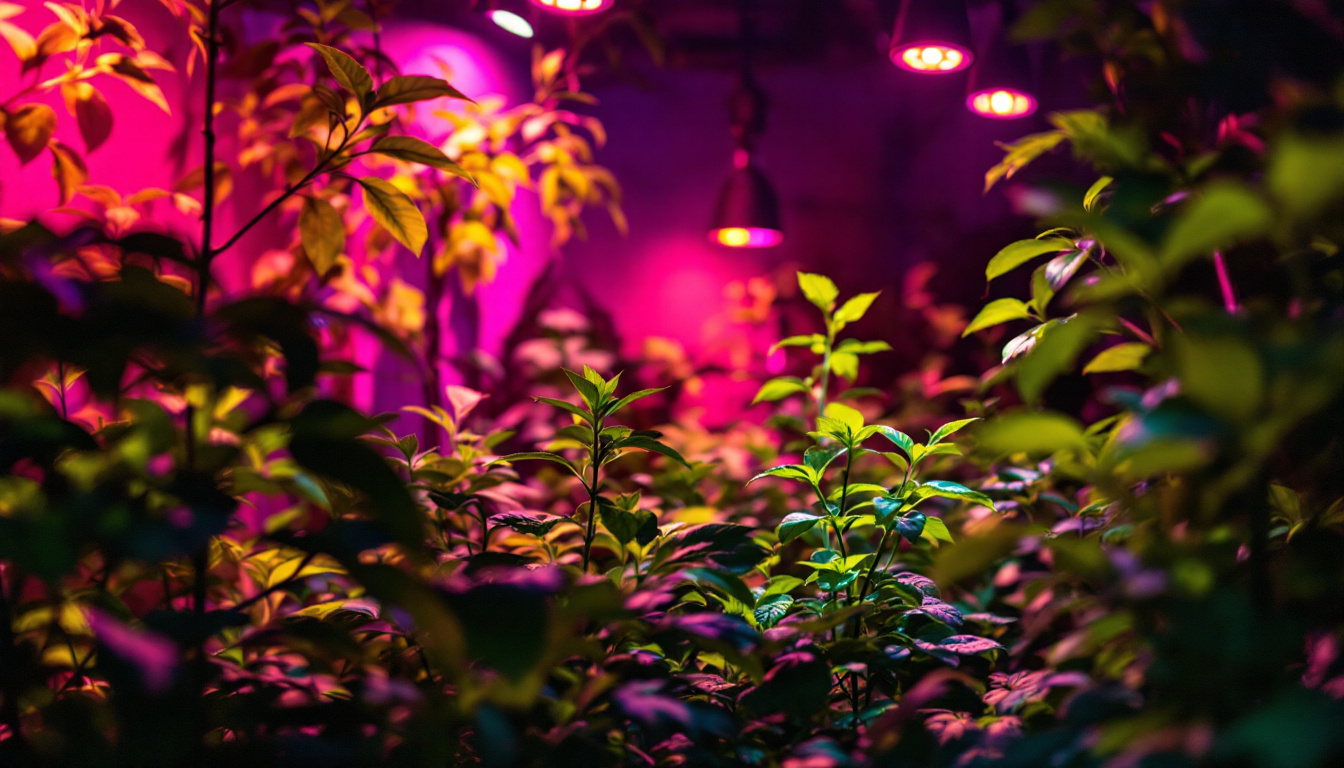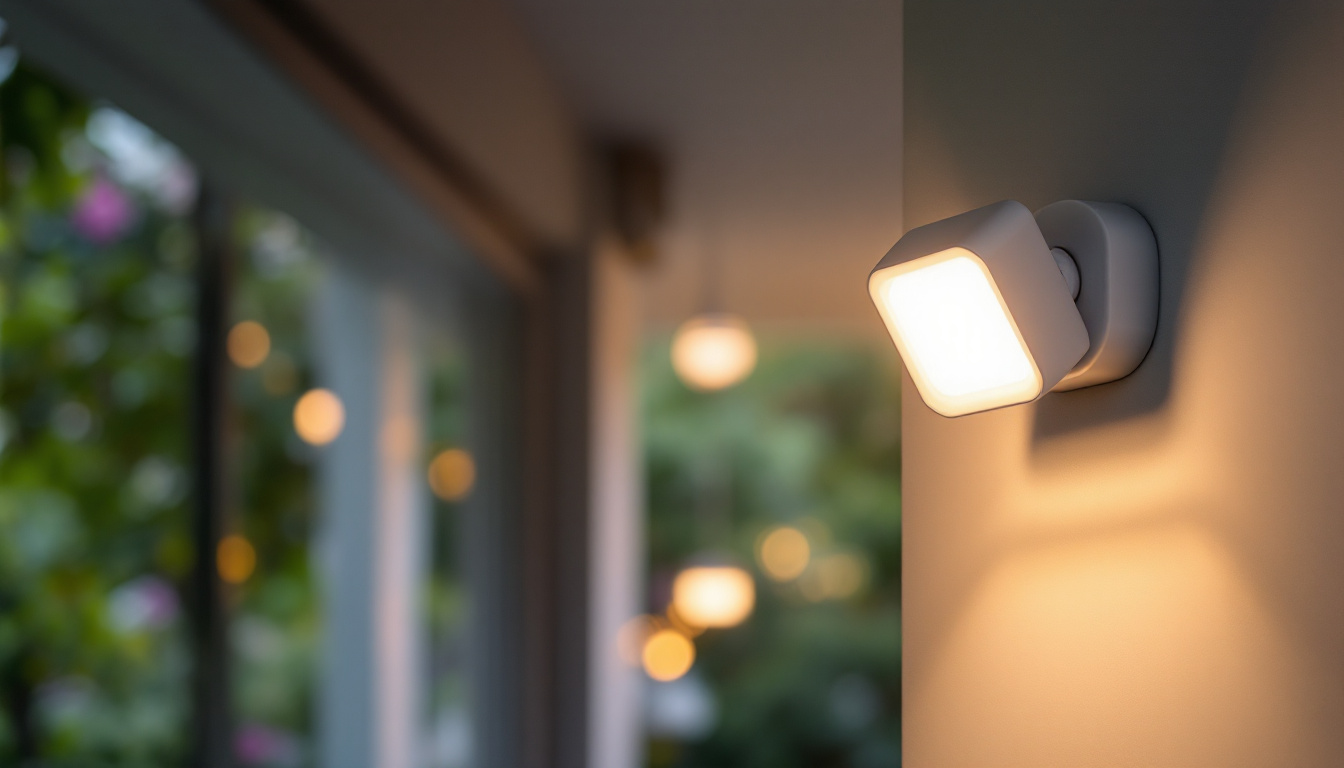
In recent years, the lighting industry has witnessed a revolutionary shift with the advent of plant LED lights. These innovative lighting solutions are not only transforming how plants grow but are also reshaping the landscape of the lighting industry as a whole. For lighting contractors, understanding the implications of this technology is crucial for staying competitive and meeting the evolving needs of clients.
Plant LED lights are designed specifically to cater to the light spectrum needs of plants. Unlike traditional lighting solutions, which often emit a broad spectrum of light, plant LEDs focus on the wavelengths that are most beneficial for photosynthesis. This targeted approach not only enhances plant growth but also increases energy efficiency. Furthermore, the longevity of LED lights means that they require less frequent replacement, contributing to a more sustainable growing environment.
Photosynthesis is the process by which plants convert light energy into chemical energy, facilitating growth and development. The primary wavelengths that plants utilize are in the blue (400-500 nm) and red (600-700 nm) ranges. Plant LED lights are engineered to emit these specific wavelengths, allowing for optimal growth conditions. Interestingly, the blue light spectrum is crucial for vegetative growth, promoting strong stems and lush foliage, while red light is essential for flowering and fruiting. By adjusting the light spectrum, growers can manipulate plant growth stages, optimizing yields and improving the quality of produce.
One of the most significant advantages of plant LED lights is their energy efficiency. Compared to traditional lighting solutions, such as incandescent or fluorescent lights, LEDs consume significantly less power. This not only reduces operational costs for growers but also decreases the carbon footprint associated with energy consumption. Moreover, the heat produced by LEDs is minimal, which means that growers can maintain optimal temperatures in their growing environments without the need for additional cooling systems. This further enhances the sustainability of using LED technology in agriculture, as it minimizes energy use across multiple fronts, from lighting to climate control.
In addition to their energy-saving benefits, plant LED lights also contribute to healthier plant growth by reducing the risk of diseases that thrive in overly humid environments caused by excessive heat. The controlled light environment created by LEDs allows for more precise management of growth conditions, enabling growers to create the ideal atmosphere for their plants. As research continues to evolve, the integration of smart technology with LED lighting is paving the way for automated systems that can adjust light intensity and spectrum based on real-time plant needs, further optimizing growth and sustainability in agricultural practices.
The shift to plant LED lights offers numerous benefits for growers, making them an attractive option for both commercial and residential applications. These advantages extend beyond just energy savings, impacting plant health and yield.
Studies have shown that plants grown under LED lights often exhibit faster growth rates compared to those under traditional lighting. The precise control over the light spectrum allows growers to tailor the conditions to suit specific plant species, leading to healthier and more robust plants. For instance, certain wavelengths can promote flowering and fruiting, while others can enhance vegetative growth. This level of customization empowers growers to optimize their cultivation strategies, ensuring that each plant receives the ideal light conditions for its growth stage.
Another compelling benefit of plant LED lights is their reduced heat output. Traditional lighting solutions can generate significant heat, which can stress plants and require additional cooling systems. In contrast, LED lights produce minimal heat, creating a more stable growing environment and reducing the need for supplementary cooling measures. This not only conserves energy but also helps maintain optimal humidity levels within the growing space, further supporting plant health. Additionally, the lower heat generation allows for closer placement of lights to the plants, maximizing light exposure without the risk of overheating, which can be particularly beneficial in compact growing setups.
LED lights are renowned for their longevity, often lasting up to 50,000 hours or more, significantly outpacing traditional grow lights. This durability translates to lower replacement costs and less frequent maintenance, allowing growers to focus their resources on cultivating their plants rather than managing lighting systems. Furthermore, the extended lifespan of LEDs means that growers can enjoy consistent light quality over time, ensuring that plants receive the same beneficial wavelengths throughout their growth cycle. This reliability can lead to more predictable harvests and a better return on investment.
Using plant LED lights also contributes to a more sustainable growing practice. Their energy efficiency means that less electricity is consumed, which not only reduces utility bills but also decreases the carbon footprint associated with energy production. Many growers are increasingly conscious of their environmental impact, and switching to LEDs aligns with a commitment to sustainable agriculture. Additionally, LEDs do not contain harmful substances like mercury, which is found in some traditional lighting options, making them a safer choice for both the environment and the growers themselves.
Plant LED lights are versatile and can be used in various applications, from commercial greenhouses to home gardening setups. Their adaptability makes them suitable for a wide range of horticultural practices.
In commercial greenhouse operations, plant LED lights can be integrated into existing systems to enhance growth cycles and improve yields. By providing the right light spectrum at different growth stages, growers can optimize production and ensure consistent quality throughout the year. Moreover, the energy efficiency of LED lights significantly reduces operational costs, allowing growers to allocate resources to other critical areas of their business, such as pest management and nutrient delivery. The ability to control light intensity and duration also enables growers to simulate seasonal changes, which can be particularly beneficial for crops that require specific photoperiods to flower or fruit.
The rise of urban farming and indoor gardening has created a demand for effective lighting solutions. Plant LED lights are ideal for these environments, as they can be installed in compact spaces and provide the necessary light for plant growth without the drawbacks of traditional lighting. Their low heat output minimizes the risk of overheating plants, which is especially important in small indoor setups. Additionally, many indoor farmers appreciate the customizable features of LED lights, which allow them to tailor the light spectrum to suit different plant species and growth phases. This flexibility not only enhances plant health but also leads to faster growth rates and higher yields, making indoor farming a viable option for urban dwellers looking to grow their own food.
Another significant application of plant LED lights is in hydroponic and aquaponic systems. These innovative farming methods rely on nutrient-rich water solutions to grow plants without soil, and adequate lighting is crucial for photosynthesis. LED lights, with their ability to emit specific wavelengths, can be fine-tuned to promote optimal growth in these systems. For instance, blue light is known to encourage vegetative growth, while red light can stimulate flowering and fruiting. By strategically using different light spectrums, growers can maximize the efficiency of their hydroponic setups, leading to faster crop cycles and reduced resource consumption. Furthermore, the compact design of LED fixtures allows for easy installation in various configurations, making them a preferred choice for both commercial and home hydroponic enthusiasts.
For lighting contractors, understanding the cost implications of transitioning to plant LED lights is essential. While the initial investment may be higher than traditional lighting options, the long-term savings and benefits can outweigh these costs.
The initial cost of plant LED lights can be a barrier for some growers. However, the energy savings, reduced maintenance costs, and increased yields can lead to significant financial benefits over time. Lighting contractors should emphasize these long-term savings when discussing options with clients.
Many regions offer incentives or rebates for switching to energy-efficient lighting solutions. Lighting contractors should stay informed about these programs to help clients take advantage of potential savings, making the transition to plant LED lights even more appealing.
Despite the numerous benefits, there are challenges and considerations that lighting contractors must address when recommending plant LED lights to clients. Understanding these factors can help in providing comprehensive solutions.
Not all plant LED lights are created equal. The market is flooded with various products, each with different specifications and capabilities. Lighting contractors must be knowledgeable about the technology to guide clients in selecting the right products that align with their specific needs.
Customizing lighting solutions for specific plant types and growth stages is crucial for maximizing the benefits of plant LED lights. Lighting contractors should be prepared to offer tailored solutions and ensure proper installation to achieve optimal results.
The future of plant LED lights looks promising, with ongoing advancements in technology and increasing adoption across various sectors. As the demand for sustainable and efficient lighting solutions continues to grow, plant LEDs are poised to play a significant role in the evolution of the lighting industry.
As research and development in LED technology progress, new innovations are likely to emerge. These may include improved light spectrums, enhanced energy efficiency, and even smart lighting solutions that can be controlled remotely. Lighting contractors should stay abreast of these developments to offer the latest solutions to their clients.
The integration of plant LED lights with smart systems can further enhance their effectiveness. By utilizing sensors and automation, growers can optimize light exposure based on real-time data, leading to improved plant health and resource management.
Plant LED lights represent a significant advancement in the lighting industry, offering numerous benefits for growers and lighting contractors alike. With their energy efficiency, tailored light spectrums, and reduced heat output, these lights are changing the way plants are cultivated and managed.
For lighting contractors, embracing this technology is essential for staying competitive in an evolving market. By understanding the advantages, applications, and challenges associated with plant LED lights, contractors can provide valuable insights and solutions to their clients, ultimately driving growth and success in their businesses.
As the industry continues to evolve, staying informed about the latest developments in plant LED technology will be crucial. By doing so, lighting contractors can position themselves as trusted advisors, ensuring they meet the needs of their clients while contributing to a more sustainable future.
As you embrace the transformative power of plant LED lights in your agricultural and lighting projects, choose LumenWholesale for your lighting needs. Our commitment to quality, affordability, and convenience ensures that you receive the best value in wholesale lighting. With our extensive selection of high-performance lighting products, you can trust that your installations will thrive under the most reliable lights in the market. Say goodbye to inflated markups and hello to hassle-free bulk buying with free shipping. Ready to elevate your lighting solutions? Visit Wholesale Lighting at the Best Value and partner with us for a brighter, more sustainable future.

Explore the pros and cons of motion sensor outdoor ceiling lights compared to other lighting options.

Discover the essentials of the Illuminated Wired Wave Sensor in just 5 minutes.

Explore the essential insights and innovative solutions offered by Veritas Light Ca, designed specifically for lighting contractors.

Discover how solar lights can transform your outdoor spaces into eco-friendly, illuminated havens.